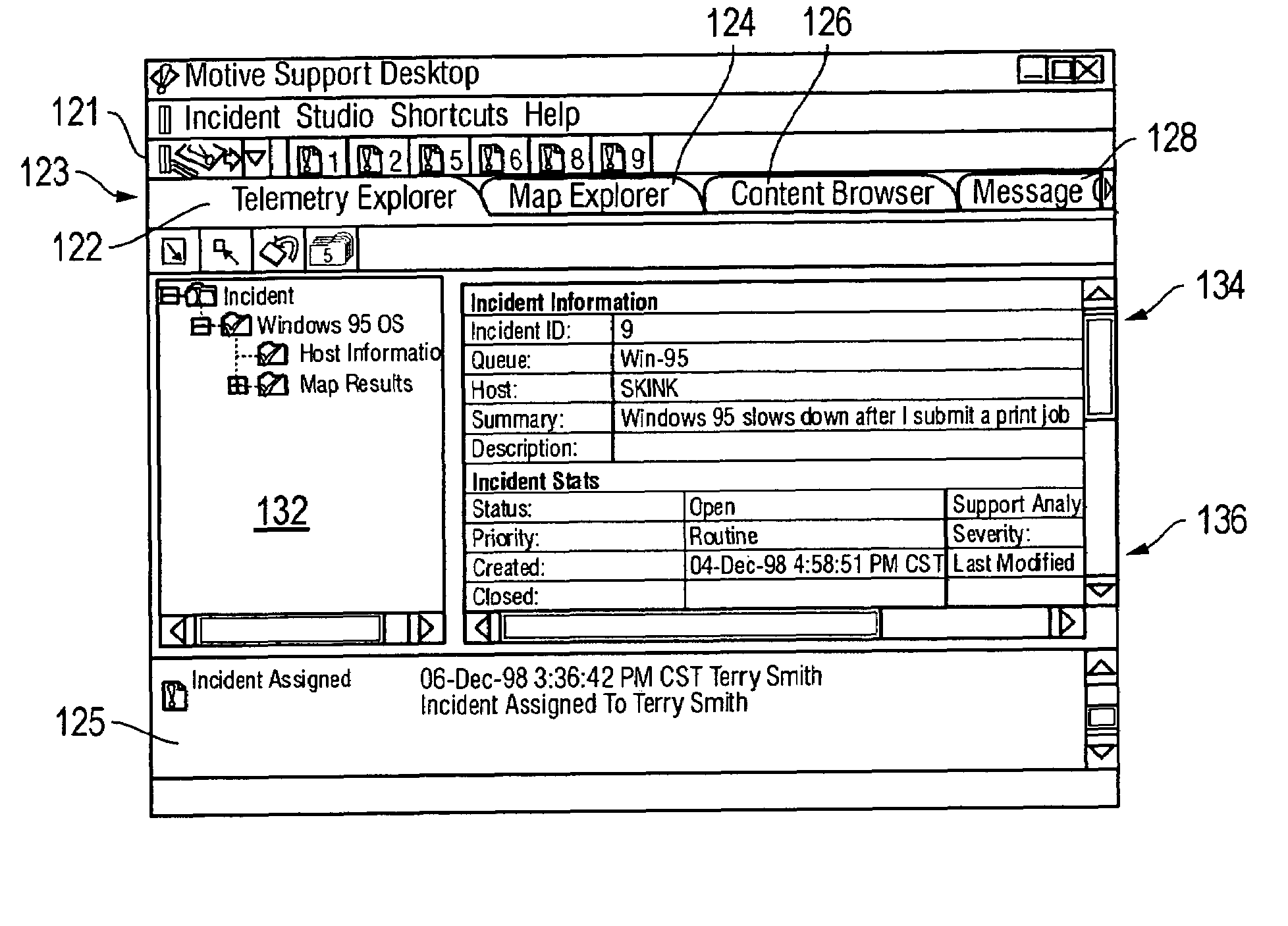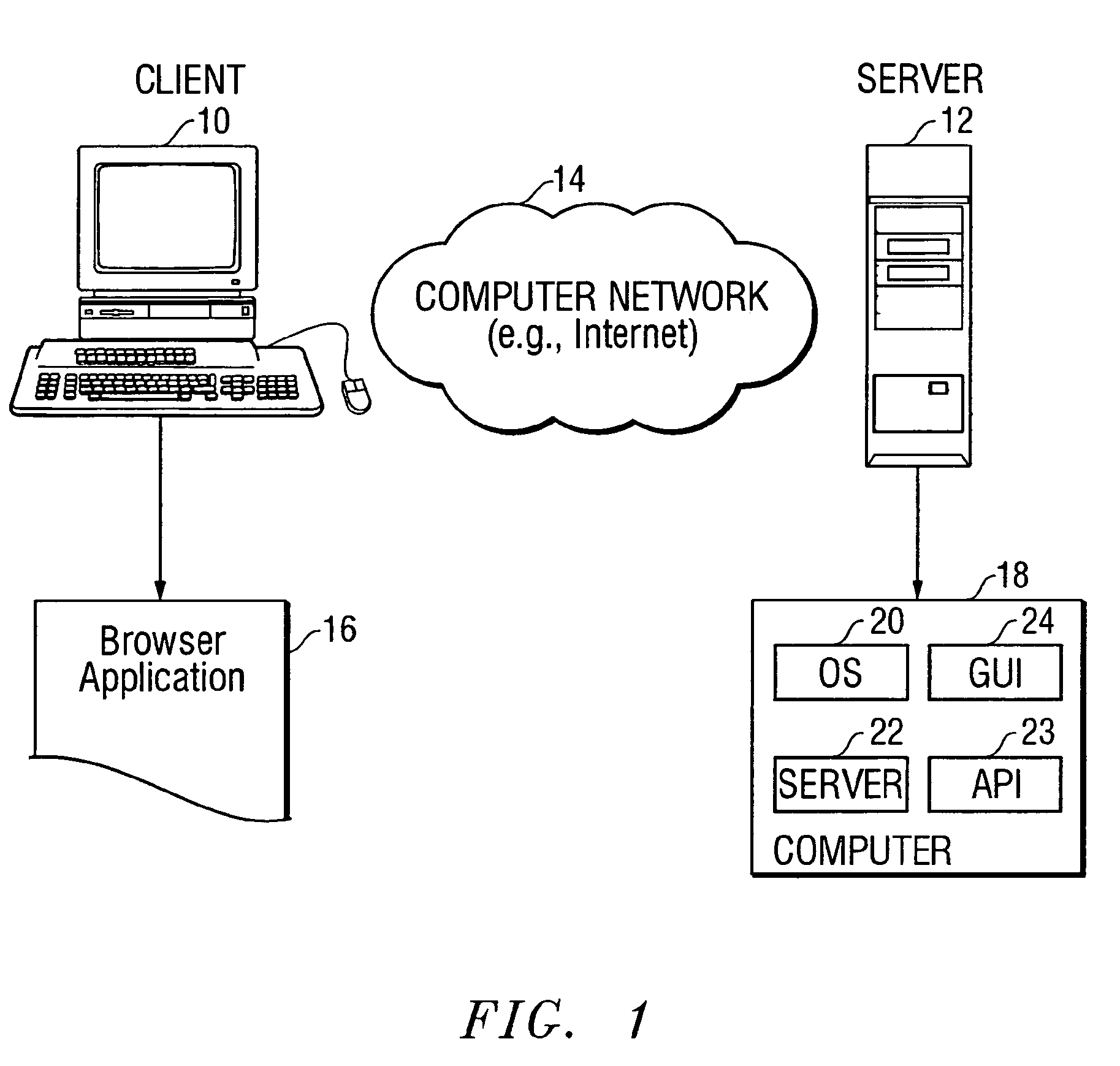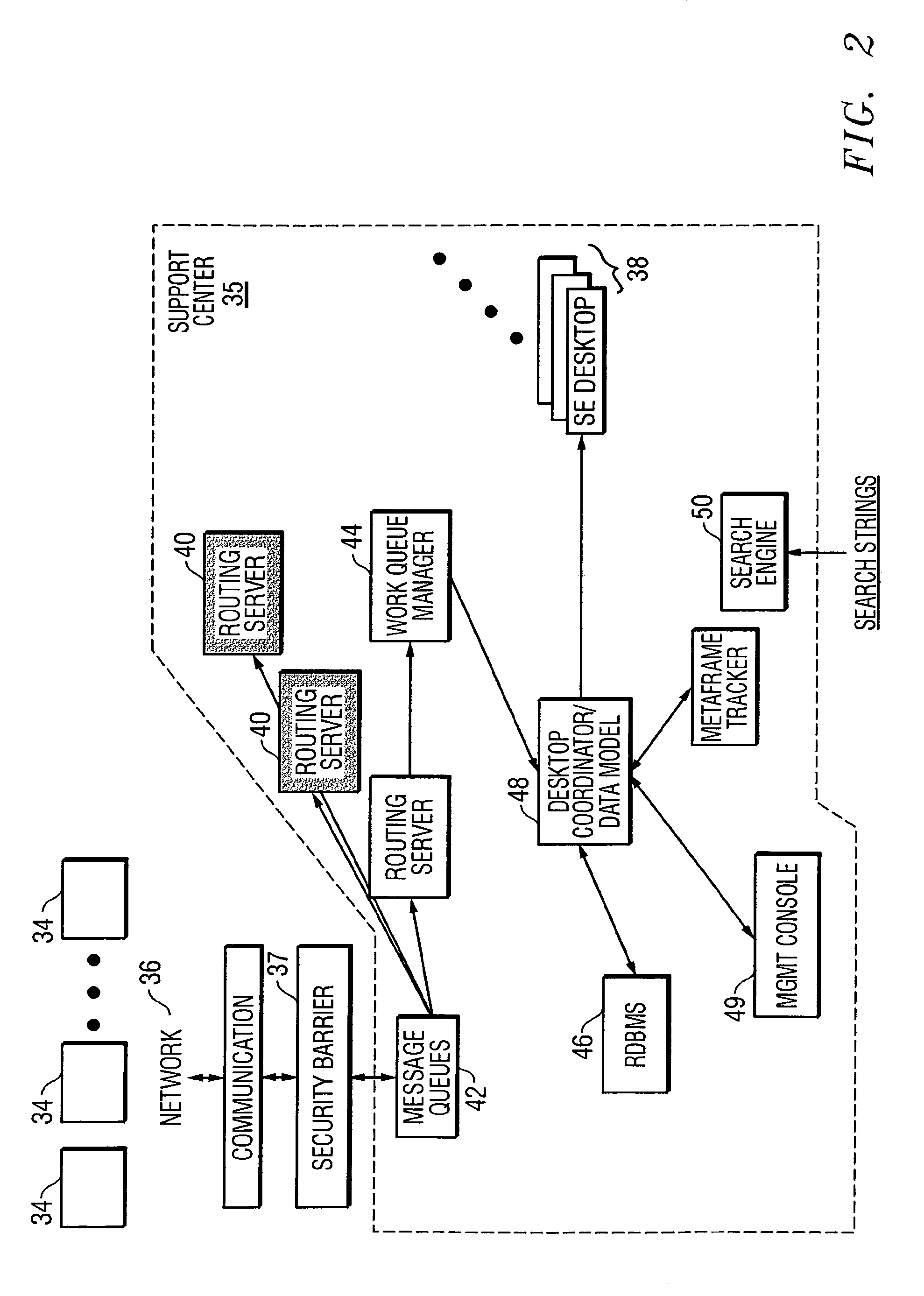Technical support chain automation with guided self-help capability, escalation to live help, and active journaling
a technology of self-help and support chain, applied in the direction of program control, instrumentation, user interface execution, etc., can solve the problems of difficult troubleshooting, less for the actual problem resolution process, and complex distributed computing environment, and achieve the effect of facilitating self-help
- Summary
- Abstract
- Description
- Claims
- Application Information
AI Technical Summary
Benefits of technology
Problems solved by technology
Method used
Image
Examples
Embodiment Construction
[0045]The present invention is implemented conveniently in an Internet or Web-based computer network, although this is not a requirement. Thus, by way of background, a representative Web client / Web server is illustrated in FIG. 1. In particular, a client machine 10 is connected to a Web server platform 12 via a communication channel 14.
[0046]As will be described, the invention assumes that a user of the client machine 10 has experienced a problem and desires automated technical support. According to the invention, the user may attempt to solve the problem through a guided “self-help” process as will be described, or he or she may seek “live-help” from a technical support engineer (SE) located at the server platform (or at some other server), or the user may first attempt self-help and then escalate to live-help as needed.
[0047]For illustrative purposes, channel 14 is the public Internet, an intranet, an extranet or any other known network connection. Web server platform 12 is one of...
PUM
 Login to View More
Login to View More Abstract
Description
Claims
Application Information
 Login to View More
Login to View More - R&D
- Intellectual Property
- Life Sciences
- Materials
- Tech Scout
- Unparalleled Data Quality
- Higher Quality Content
- 60% Fewer Hallucinations
Browse by: Latest US Patents, China's latest patents, Technical Efficacy Thesaurus, Application Domain, Technology Topic, Popular Technical Reports.
© 2025 PatSnap. All rights reserved.Legal|Privacy policy|Modern Slavery Act Transparency Statement|Sitemap|About US| Contact US: help@patsnap.com



